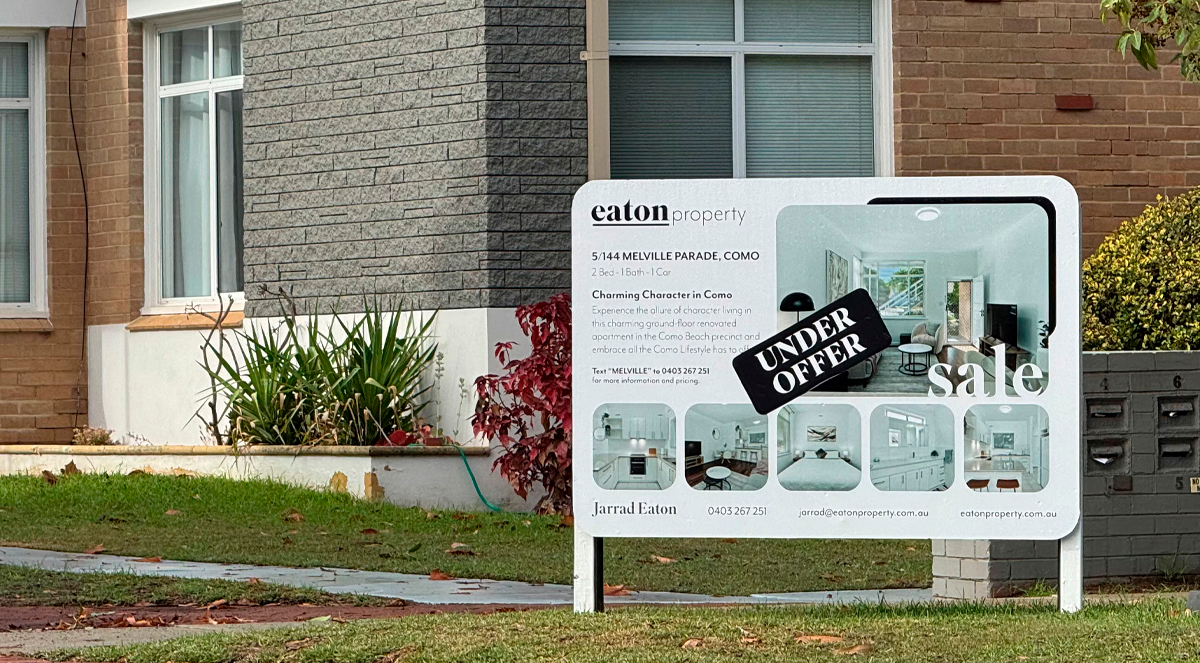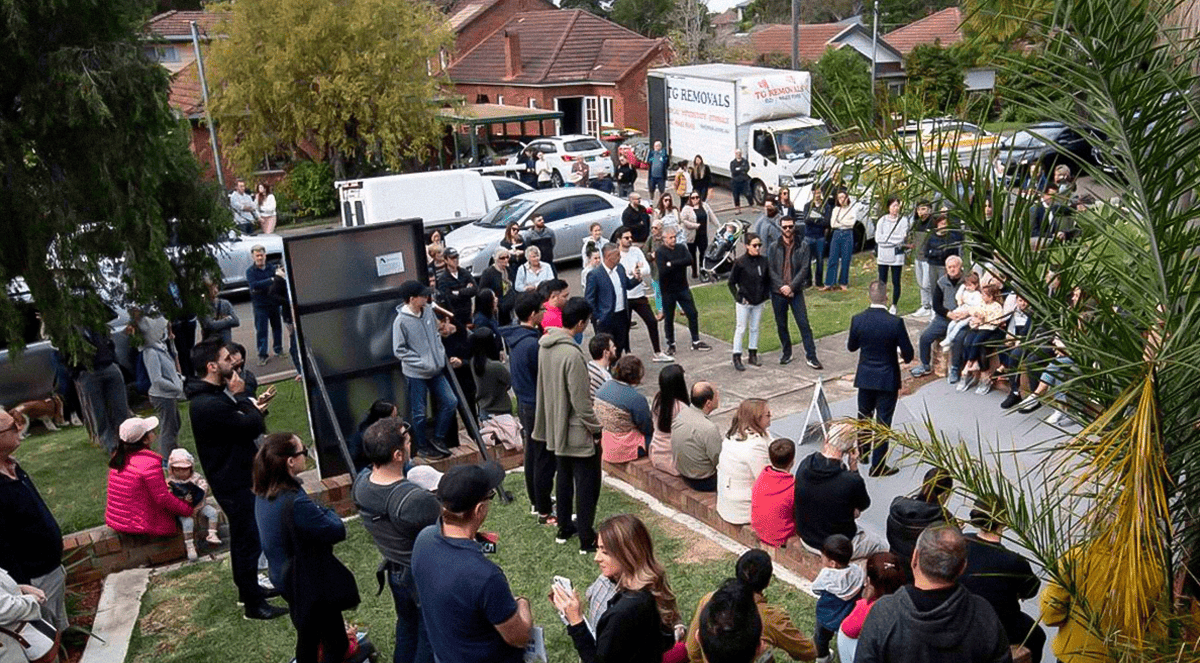Features > Property News & Insights > Market updates
RBA keeps rates on hold for 12th straight month
-1.png)
Image by Aaron Francis/The Australian
KEY POINTS
- The RBA’s decision to keep interest rates on hold following its November board meeting was widely expected
- Rates have now been held at 4.35%, a 13-year high, for exactly 12 months
- RBA won’t begin to cut interest rates until mid-2025, with only two full 0.25% cuts factored in by the end of next year
The board of the Reserve Bank of Australia has decided to leave interest rates on hold at its Melbourne Cup Day meeting and also appears to have dashed hopes of an interest rate cut before at least the middle of next year.
In a blow for mortgage holders on variable rate loans, Australia’s official cash rate will remain at 4.35%, a 13-year high and the level it’s been at for the last 12 months.
The details
The Reserve Bank of Australia board says it recognises that inflation in Australia “has fallen substantially since the peak in 2022, as higher interest rates have been working to bring aggregate demand and supply closer towards balance.”
However, the media release accompanying its latest rate decision makes clear that inflation - especially underlying inflation, which the RBA concentrates on - isn’t falling fast enough for it to be in a position to even think about starting to cut rates.
“They are making some progress,” explains independent economist Ivan Colhoun, “but not rapid progress at this point in time.
“Of course, the good news is the labour market is still very strong and has been growing strongly - that's part of their (the RBA’s) mandate.
“But getting low inflation is also a priority, and they keep saying it's their number one priority.”
The Reserve Bank is mandated to use the only real tool at its disposal - interest rates - to keep inflation in the 2-3% range.
Recent figures from the Bureau of Statistics show that headline inflation was 2.8% over the year to the September quarter of 2024.
However, core or “trimmed mean” inflation was still relatively high at 3.5%.
The RBA’s latest Statement on Monetary Policy, released at the same time as the monetary policy decision was handed down, shows trimmed mean inflation isn’t forecast to drop back into the target 2-3% band until December 2025 and won’t reach the mid-way (2.5%) point of that band until December 2026.
Underpinning the RBA’s inflation and other economic forecasts are a series of “assumptions”.
One of these assumptions is the cash rate.
The RBA forecasts clearly show it’s assumed the cash rate will be in the vicinity of 4.1% in June next year.
That’s almost exactly a full 0.25% cut from the current rate.
By December next year, the RBA assumption is that the cash rate will be around 3.7% - just over 0.5% lower than the current 4.35%.
The message here is clear:
The assumptions behind the RBA’s own economic forecasts don’t point to a slew of interest rate cuts next year.
Official interest rates will remain relatively high for at least another few years and only come down slowly.
While RBA Governor Michele Bullock reiterated at her post-decision press conference that she was “not ruling anything in or out” (that is, cutting or putting up interest rates), she did make clear the board believes the monetary policy is currently “restrictive” - which seems to indicate that the RBA has a level of confidence that interest rates rises so far (thirteen since May 2022) are having an effect in slowing the economy.
In other words, the next move in interest rates is likely to be down.
Mortgage stress
Those suffering under the weight of high retail mortgage rates “should not wait for a rate cut to come to them,” according to RateCity.com.au.
The rate comparison website says its analysis shows an owner-occupier with a $500,000 loan balance today “could potentially save $12,315 over the next two years by refinancing to one of the lowest variable rates on the market, even after factoring in switching costs.”
“The cash rate has been stuck in neutral for almost a year, however, variable home loan rates have started to drop,” says RateCity’s Money Editor Laine Gordon.
“In the past year, around 70 banks have lowered at least one variable home loan rate, but not all customers will have had a rate cut.
“It’s a timely reminder to check your home loan rate and compare it to what your bank is currently offering new customers.
“If you are being taken for a ride, then now is the time to do something about it,” she says.
Home prices
So what does the RBA decision to keep rates steady (and signal no immediate change in policy) mean for property prices?
Rates have now been on hold for a year, but Australian residential property markets have remained resilient.
“Home price growth has persisted despite the higher interest rate environment, with the PropTrack Home Price Index indicating national home prices hit a fresh record in October,” says REA Group Senior Economist Eleanor Creagh.
“Prices have now cycled through 22 consecutive months of growth, although performance differs significantly around the country.”
However, Ms Creagh points out price growth has slowed in recent months.
“The pace of home-price growth remains slower than earlier in the year as buyers enjoy more choice and high interest rates and affordability constraints remain.”
Nevertheless, she says that while a “higher number of properties listed for sale and uncertainty around rate cuts may slow price growth, prices are expected to keep rising as the selling season closes out.
“At the very least, the decision to hold interest rates at 4.35% should provide a further boost to household confidence,” says Tim Lawless, Head of research at CoreLogic, “along with clear signs that inflation is moving in the right direction and the next move is likely to be down, albeit with some uncertainty around the timing of cuts.
“A further rise in sentiment is a positive for housing, but we aren’t likely to see stronger housing outcomes until borrowing capacities improve and barriers to mortgage serviceability assessments are reduced.”
Stay Up to Date
with the Latest Australian Property News, Insights & Education.




.png?width=292&height=292&name=Copy%20Link%20(1).png)
 SIGN UP FOR FREE NEWSLETTER
SIGN UP FOR FREE NEWSLETTER





.jpg?width=1920&height=1080&name=Warning%2c%20You%20Might%20Be%20Facing%20Higher%20Taxes%20Soon%20(1).jpg)





.png?width=1920&height=1080&name=Rate%20Drops%20Signal%20BIGGEST%20Property%20Boom%20in%20DECADES%20(1).png)

.jpg?width=1920&height=1080&name=Labor%20vs%20Liberal%20These%20Housing%20Policies%20Could%20Change%20the%20Property%20Market%20Forever%20(1).jpg)
.jpg?width=1920&height=1080&name=QLD%20Slashes%20Stamp%20Duty%20Big%20News%20for%20Investors%20%26%20Home%20Buyers%20(1).jpg)
.jpg?width=1920&height=1080&name=Trump%20Just%20Slapped%20Tariffs%20%E2%80%93%20Here%E2%80%99s%20What%20It%20Means%20for%20Australia%20(1).jpg)
.jpg?width=1920&height=1080&name=Federal%20Budget%202025%20More%20Debt%2c%20No%20Housing%20%E2%80%93%20Here%E2%80%99s%20What%20You%20Need%20to%20Know%20(1).jpg)
.jpg?width=1920&height=1080&name=Australias%20Housing%20Crisis%20is%20about%20to%20get%20MUCH%20Worse%20(New%20Data%20Warns).jpg)
%20(1).jpg?width=1920&height=1080&name=Australias%20RENTAL%20CRISIS%20Hits%20ROCK%20BOTTOM!%20(2025%20Update)%20(1).jpg)
%20(1).png?width=1920&height=1080&name=Is%20Adelaide%20Still%20a%20Good%20Property%20Investment%20(2025%20UPDATE)%20(1).png)
.jpg?width=1920&height=1080&name=RBA%20Shocks%20with%20Rate%20Cuts!%20What%E2%80%99s%20Next%20for%20Property%20Investors%20(1).jpg)
%20(1).jpg?width=1920&height=1080&name=I%20Predict%20The%20Feb%20Rate%20Cut%20(My%20Price%20Growth%20Prediction)%20(1).jpg)
.png?width=1920&height=1080&name=Why%20Property%20Prices%20Will%20Rise%20in%202025%20Market%20Predictions%20(1).png)
.jpg?width=1920&height=1080&name=Why%20Investors%20Are%20Choosing%20Apartments%20Over%20Houses%202%20(1).jpg)
.jpg?width=1920&height=1080&name=Why%20Rate%20Cuts%20Will%20Trigger%20A%20Property%20Boom%20(1).jpg)
.jpg?width=1920&height=1080&name=Retire%20On%202Million%20With%20One%20Property%20(Using%20SMSF).jpg)
.jpg?width=1920&height=1080&name=4%20Reasons%20Why%20You%20Should%20Invest%20in%20Melbourne%20Now%20(1).jpg)
%20(1).jpg?width=1920&height=1080&name=Old%20Property%20vs%20New%20Property%20(Facts%20and%20Figures%20Revealed)%20(1).jpg)
%20(1).jpg?width=1920&height=1080&name=Will%20The%20New%20QLD%20Govt%20Create%20a%20Property%20Boom%20or%20Bust%20(My%20Prediction)%20(1).jpg)
%20Scott%20Kuru%20(1).jpg?width=1920&height=1080&name=Inflation%20Hits%20Three-Year%20Low%20(Will%20RBA%20Cut%20Rates%20Soon)%20Scott%20Kuru%20(1).jpg)
.jpg?width=1920&height=1080&name=How%20to%20Buy%20Investment%20Property%20Through%20SMSF_%20The%20Ultimate%20Guide%20(1).jpg)
.jpg?width=1920&height=1080&name=Victoria%20Slashes%20Stamp%20Duty%20Melbourne%20Set%20to%20Boom%20Scott%20Kuru%20(1).jpg)
.png?width=1571&height=861&name=Are%20Foreign%20Buyers%20Really%20Driving%20Up%20Australian%20Property%20Prices%20(1).png)
.jpg?width=1920&height=1080&name=The%20Single%20Factor%20That%20Predicts%20Property%20Growth%20Regions%20(1).jpg)
%20Scott%20Kuru%20(1).jpg?width=1920&height=1080&name=My%20Prediction%20On%20Rates%20%26%20Negative%20Gearing%20(Market%20Crash)%20Scott%20Kuru%20(1).jpg)

-1.png?width=1920&height=1080&name=Major%20Banks%20Cut%20Rates%20Will%20RBA%20Follow%20Suit%20(Sept%20Rate%20Update)-1.png)
%20Scott%20Kuru-1.png?width=1920&height=1080&name=Rate%20Cut%20Coming%20What%20New%20Zealands%20Move%20Means%20for%20Australia%20(Sept%20Prediction)%20Scott%20Kuru-1.png)
%20(1).jpg?width=1920&height=1080&name=Buy%20when%20the%20interest%20rates%20are%20high!%20(Why%20you%20must%20buy%20now!)%20(1).jpg)
.jpg?width=1920&height=1080&name=Carms_Revised%20Taxes%20Due%20Aug%209%20YT%20Thumbnail02%20(1).jpg)
.jpg?width=1920&height=1080&name=Carms_Too%20Little%20Too%20Late%20Aug%207%20YT%20Thumbnail01%20(1).jpg)









.jpg?width=1920&height=1080&name=Carms_Rate%20Drop%20In%20July%20Jun%2010%20YT%20Thumbnail02%20(1).jpg)
.jpg?width=1920&height=1080&name=Carms_Own%20a%20Property%20V6%20Jun%205_YT%20Thumbnail%20(1).jpg)









.png?width=1920&height=1080&name=Artboard%201%20(3).png)






.jpg?width=1920&height=1080&name=YT%20thumbnail%20%20(1).jpg)

